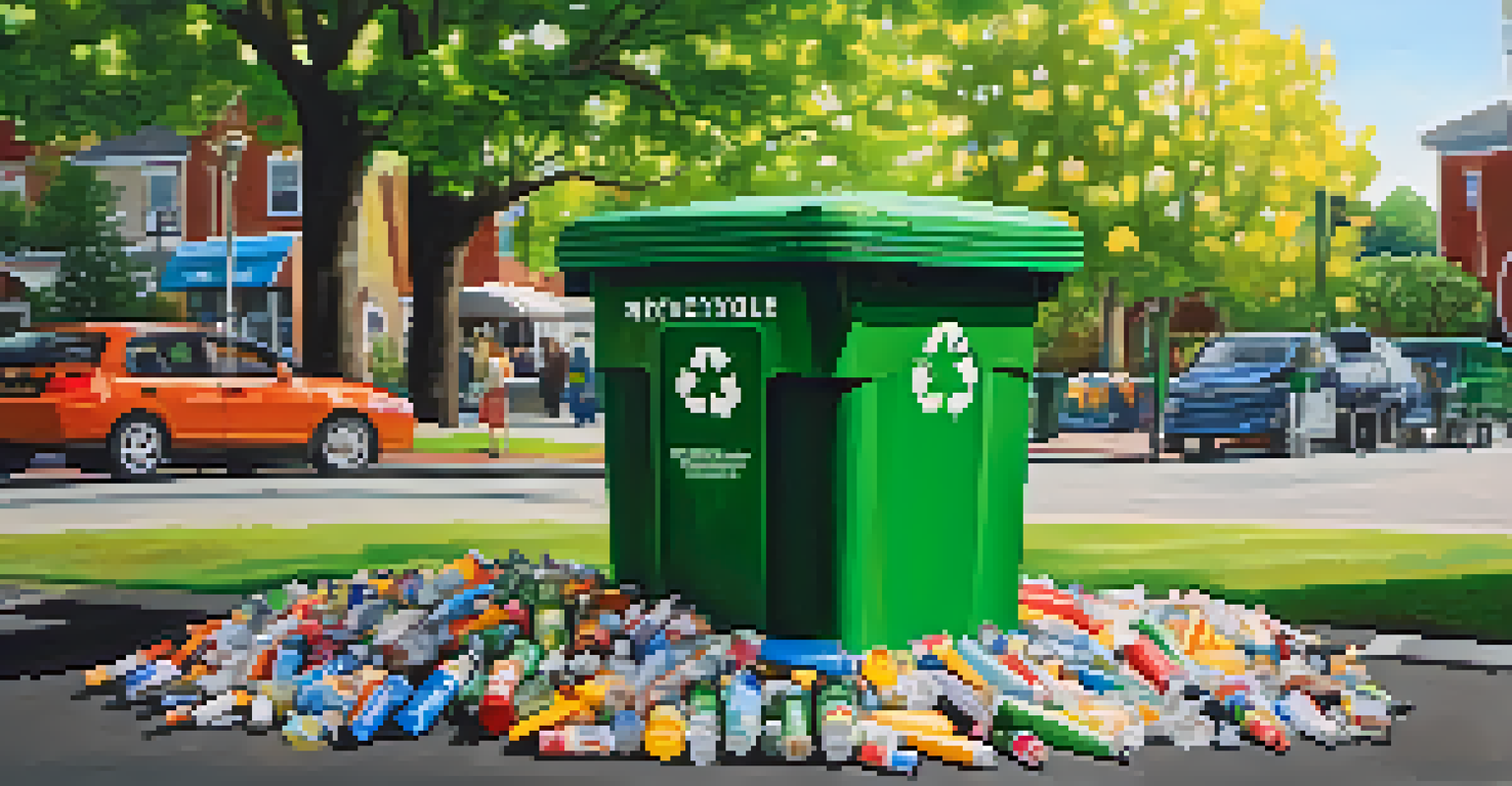Ethereum and the Circular Economy: A Sustainable Future

Understanding Ethereum and Its Role in Sustainability
Ethereum is a decentralized blockchain platform that allows developers to build smart contracts and decentralized applications (dApps). This flexibility enables innovative solutions to emerge, particularly in sustainability. By leveraging Ethereum, businesses can enhance transparency and traceability in their supply chains, making it easier to adopt circular economy principles.
Blockchain technology has the potential to transform the way we manage resources and create a more sustainable economy.
In a circular economy, products are designed for longevity, reuse, and recycling, aiming to minimize waste. Ethereum's smart contracts can streamline processes, ensuring that materials are reused efficiently and responsibly. For instance, companies can create tokenized assets that represent recyclable materials, facilitating a smoother transition to a more sustainable model.
Moreover, Ethereum's ability to facilitate peer-to-peer transactions can encourage collaborative consumption. This allows individuals and businesses to share resources instead of owning them outright, reducing overall consumption and waste while promoting a sense of community.
The Circular Economy: A Brief Overview
The circular economy is an economic model that contrasts with the traditional linear economy, which follows a 'take-make-dispose' approach. Instead, it focuses on keeping resources in use for as long as possible, extracting maximum value while in use and recovering materials at the end of their life cycle. This shift is crucial for addressing environmental challenges and resource depletion.

By prioritizing sustainability, the circular economy seeks to reduce waste and promote resource efficiency. This can be achieved through strategies like recycling, refurbishing, and upcycling, all of which can be enhanced by technologies like Ethereum. These processes not only benefit the environment but can also lead to economic opportunities and job creation.
Ethereum Enhances Sustainability
Ethereum's decentralized platform promotes transparency and efficiency in supply chains, supporting sustainable practices.
Adopting a circular economy model can be challenging, but the integration of technology, particularly blockchain, presents new solutions. Ethereum offers a decentralized platform where various stakeholders can collaborate, ensuring that sustainability goals are met while fostering innovation and growth.
How Ethereum Supports Circular Economy Initiatives
Ethereum supports circular economy initiatives by providing the infrastructure for decentralized applications. These applications can facilitate efficient recycling processes, track materials, and ensure that waste is minimized. For instance, a dApp can connect consumers with recycling services, making it easier to recycle unwanted products and materials.
In a circular economy, products are designed to be reused, refurbished, and recycled, minimizing waste and maximizing resource efficiency.
Additionally, Ethereum can help create digital identities for products, enabling better tracking of their lifecycle. This can enhance accountability and transparency among manufacturers, consumers, and recycling facilities. By knowing the origin and use history of a product, stakeholders can make informed decisions about recycling and reusing materials.
Moreover, Ethereum's tokenization capabilities allow for the creation of incentives for sustainable behavior. For example, users can earn tokens for recycling or participating in sustainable initiatives, encouraging more people to engage in circular economy practices.
Real-World Examples of Ethereum in Action
Several projects are already harnessing Ethereum's potential to promote sustainability. One notable example is the Circular Economy project, which seeks to create a platform for tracking the lifecycle of products. By using Ethereum's blockchain, the project ensures that all transactions are transparent and verifiable, fostering trust among users.
Another example is the use of Ethereum in waste management systems. By implementing smart contracts, organizations can optimize collection routes and schedules, significantly reducing fuel consumption and emissions. This not only benefits the environment but also lowers operational costs.
Circular Economy Explained
The circular economy emphasizes resource longevity and waste reduction, contrasting sharply with traditional linear models.
These examples illustrate how Ethereum can facilitate sustainable practices across various industries, demonstrating its versatility and potential to drive the circular economy forward.
Challenges and Considerations for Ethereum Adoption
While Ethereum offers exciting opportunities for the circular economy, there are challenges to its widespread adoption. Scalability remains a concern, as the network can become congested during high-demand periods. This can lead to increased transaction costs and slower processing times, which may deter businesses from utilizing the platform.
Additionally, the energy consumption associated with Ethereum's proof-of-work consensus mechanism has raised environmental concerns. Although Ethereum is transitioning to a more energy-efficient proof-of-stake model, ensuring that the network remains sustainable is crucial. Stakeholders must remain vigilant and advocate for practices that minimize environmental impact.
Lastly, the complexity of blockchain technology can be a barrier for some businesses. To foster adoption, educational initiatives and support resources are vital to help organizations understand and implement Ethereum-based solutions effectively.
The Future of Ethereum and the Circular Economy
As Ethereum evolves, its potential to support the circular economy will continue to grow. The planned upgrades to the network, such as the transition to Ethereum 2.0, aim to enhance scalability and sustainability, making it a more attractive choice for businesses looking to adopt circular practices. This could lead to increased adoption and innovation in various sectors.
Moreover, as more companies recognize the importance of sustainability, the demand for Ethereum-based solutions will likely rise. This could spark a wave of new projects focused on creating circular economy applications, driving further investment and interest in the platform.
Challenges in Ethereum Adoption
Scalability issues and energy consumption pose challenges to Ethereum's widespread adoption in supporting circular economy initiatives.
Ultimately, the synergy between Ethereum and the circular economy presents a promising outlook for a more sustainable future. By leveraging blockchain technology, businesses can not only improve their practices but also contribute to a healthier planet.
Conclusion: Embracing a Sustainable Future with Ethereum
In conclusion, Ethereum offers a powerful tool for advancing the circular economy and promoting sustainability. By enabling transparency, traceability, and efficiency, it helps businesses adopt practices that minimize waste and optimize resource use. As we face increasing environmental challenges, the need for innovative solutions becomes more pressing.
The collaboration between technology and sustainability is essential for forging a path toward a more sustainable future. By embracing the potential of Ethereum, businesses can play an active role in this transition, benefiting not only their bottom line but also the planet.

As we look ahead, it is essential for stakeholders to continue exploring the intersection of blockchain technology and sustainability. Together, we can create a circular economy that ensures resources are used wisely and responsibly for generations to come.